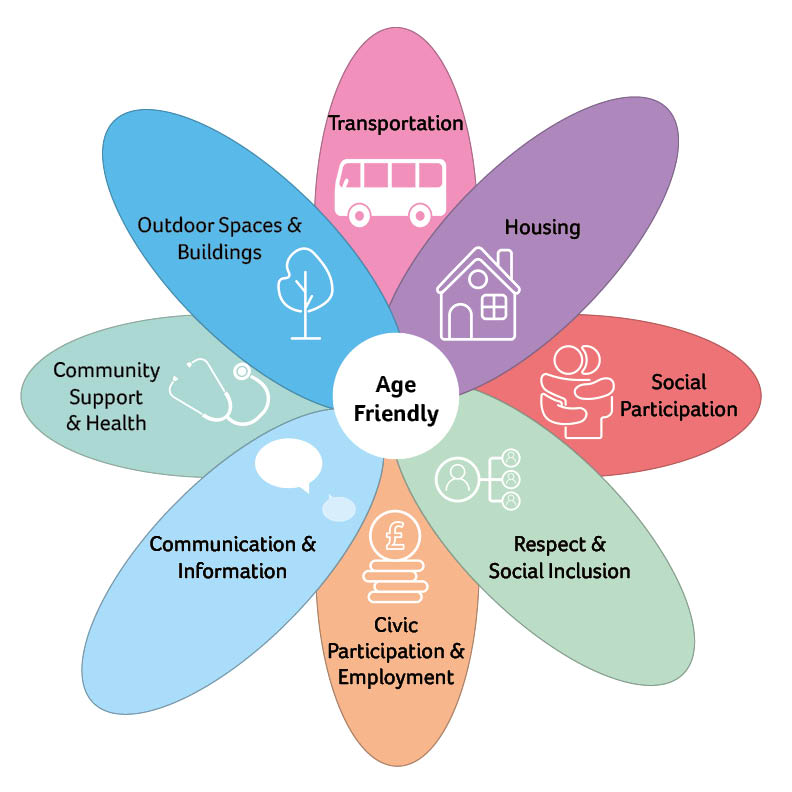The 8 Domains

Age Friendly Norwich is based on the World Health Organisation (WHO) work on the UN decade of healthy aging ( 2021-2030) and aligned to the Centre for Ageing Better (CfAB) strategy 2022-25.
- Designing the physical environment to improve access and mobility
- Promoting social engagement for older people
- Developing relationships and support between different generations
Welcome to Age-friendly World - Age-Friendly World (who.int)
Community support and health services
Community support is strongly connected to good health and wellbeing throughout life, alongside accessible and affordable health care services. Both criteria are vital for maintaining health and independence as people age. More emphasis on community support is required to help and support people where they live, and health and social care funding will need to increase exponentially.
Outdoor spaces and buildings
The outside environment and public buildings have a major impact on the mobility, independence and quality of life of people in later life. Characteristics of the built environment that contribute to being age-friendly include: access and safety, green spaces, walkable streets, outdoor seating and accessible buildings (with lifts, stairs with railings etc).
Transport
Transportation, including accessible and affordable public transport, is a key issue for people in later life. People’s ability to move about in the community impacts on participation in and access to services. Every aspect of transport infrastructure, equipment and service is integral to creating an Age friendly Community, particularly as we know mobility is affected as we age and we have high issues with loneliness.
Housing
Safe, good-quality homes can maintain or improve physical and mental health, wellbeing and social connections. It is vital to have housing and support that allow us to age comfortably and safely within the community of people’s choosing.
Social participation
Social participation is strongly connected to good health and wellbeing throughout life. It is important to enable people to feel connected and have a sense of belonging, and maintain or establish supportive and caring relationships. Enabling accessibility, particularly for those with mobility issues, is also key.
Respect and social inclusion
An Age friendly Community enables people of all backgrounds to actively participate and treats everyone with respect, regardless of age. Multigenerational activities are a great way for different generations to learn from one another.
Civic participation and employment
Age friendly Communities provide options for people in later life to continue to contribute to their communities. Those options can include paid employment or voluntary work and being engaged in the political process.
Communication and information
Staying connected with events and people and getting timely, practical information to meet personal needs is vital for active ageing. It is important to have relevant information that is accessible to those of us with varying capacities and resources.
